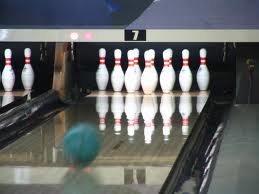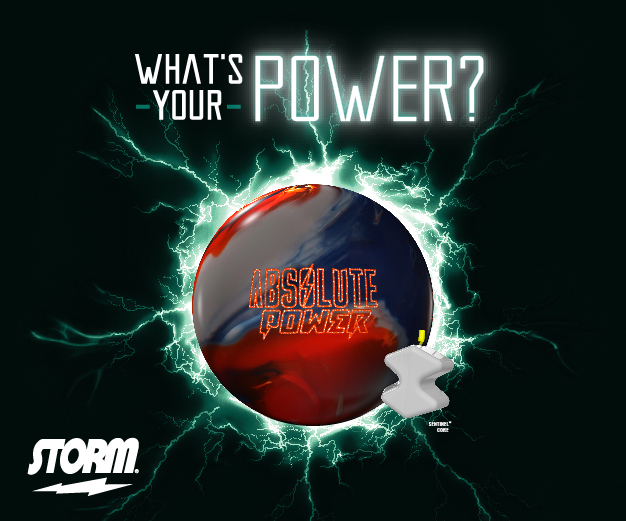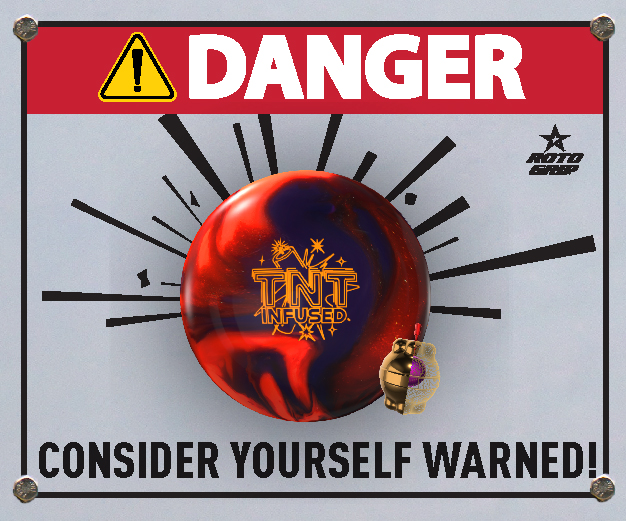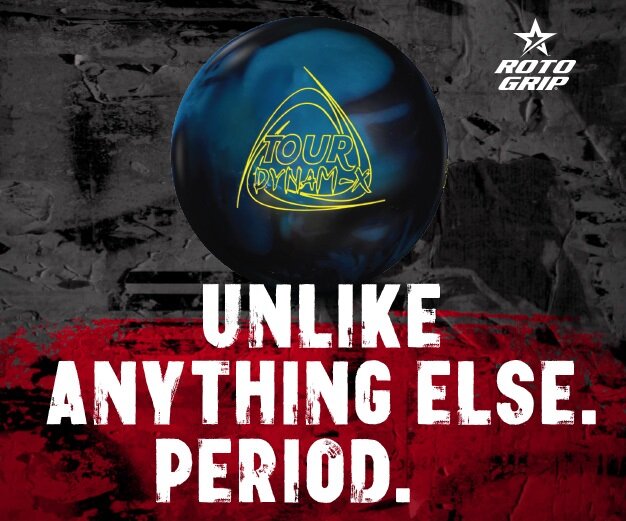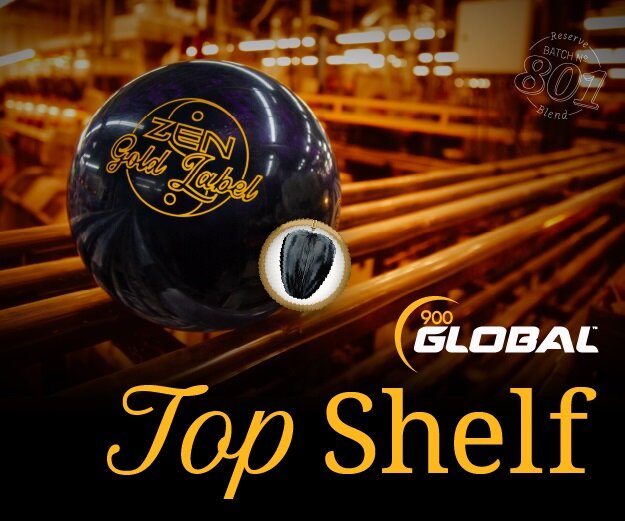 Bowling is probably one of the toughest sports in the world, and yes, it IS a sport. You throw a 16lb ball (yes, I am one of the few that still throws “man weight”) down a lane that has an invisible oil pattern, and trying to hit a target that is no wider than a couple of coins and knock down 10 3lb pins over that are 60 feet away. Sound easy? I don’t think so. Bowling requires accuracy, repetition, and endurance. Over the years, I have gotten a bad rap from people once they find out I bowl. Everyone laughs and tells me that bowling isn’t a sport, we aren’t athletes, and that it takes no skill to throw a ball down a lane. So is a golfer an athlete? They don’t even carry their own bags on the course. The club hits the ball, at least we hit throw the ball ourselves. We carry our equipment to and from the paddock, pair to pair, and let me tell you, bowling bags are heavy. If you bowl a PBA regional, or bowl the High Roller, or any local tournament, last time I checked, when you pay the entry fee, you are NOT given a caddy. We do it ourselves.
Bowling is probably one of the toughest sports in the world, and yes, it IS a sport. You throw a 16lb ball (yes, I am one of the few that still throws “man weight”) down a lane that has an invisible oil pattern, and trying to hit a target that is no wider than a couple of coins and knock down 10 3lb pins over that are 60 feet away. Sound easy? I don’t think so. Bowling requires accuracy, repetition, and endurance. Over the years, I have gotten a bad rap from people once they find out I bowl. Everyone laughs and tells me that bowling isn’t a sport, we aren’t athletes, and that it takes no skill to throw a ball down a lane. So is a golfer an athlete? They don’t even carry their own bags on the course. The club hits the ball, at least we hit throw the ball ourselves. We carry our equipment to and from the paddock, pair to pair, and let me tell you, bowling bags are heavy. If you bowl a PBA regional, or bowl the High Roller, or any local tournament, last time I checked, when you pay the entry fee, you are NOT given a caddy. We do it ourselves.
Last month, I had the pleasure of doing my first podcast for tburg.wpengine.com, and I had the honor of speaking with one of the best coaches in the world, Bill Hall. There are not too many people that know more about this sport then Bill. In speaking w/him, I asked him about the two articles I wrote earlier this year, the top 10 people that were hurt by resin, and top 10 people that benefited from resin. Bill gave great examples of people that we might have not known of that were hurt by the invention of resin, such as Ray Perez and Mark Thayer. Later on in the interview, Tim asked him about one of his students game, Danny Wiseman. Bill made this quote to us “he’s so accurate that the reactive resin has actually hurt him”. I followed up to that statement and said that accuracy is not something the modern bowler really has anymore because the balls are so strong, and the balls give the bowlers an extra 3-4 boards down the lanes, on both sides of the breakpoint. Can being too accurate really hurt a bowler with today’s equipment? When I bowl, I try to find a spot on the lane that will give me a little bit of “mistake room” either inside or outside of my target, so if I miss my mark, I won’t pay the full price by having an open frame on the scoreboard. Come on, what bowler doesn’t look for that? I think the difference between my game, and the people I call “The Children of Resin” is that when I miss my mark, I miss by about 2 or 3 boards, the new breed of bowling, they miss by 6-7 boards either way of their target and still strike, and that is ridiculous. So I had to ask someone in the bowling world what they thought about resin hurting a bowler who is accurate. And who better to ask than USBC Hall of Famer Jeff Richgels.
I spoke with Riggs, and the 1st question I asked was has the resin ball made accuracy a thing of the past. “That is just a stupid comment. It is absurd. What happens when you bowl a tournament on a real pattern like the US Open. The US Open pattern is the most unforgiving pattern in the world, and accuracy is king.” And in bowling the US Open twice, I totally agree with that statement. If you miss by 1 board either way on that pattern, you are going to have some sort of a geometric design staring you in the face 60 feet away. “If you want to bowl a tournament where you need to be accurate, where the equipment doesn’t matter, go bowl the Petersen Classic, and tell me that accuracy doesn’t matter after those 8games” Richgels said. I think that you had to be more accurate back in the 70s, 80s, and early 90s when the bowling balls were not “steroid” like, and if you didn’t hit your mark, you didn’t hit the pocket. So does that make the players from back in the plastic and urethane era better than the modern bowlers? “I don’t think the talent was stronger back then, but I think now the bowlers are better athletes then bowlers back in the day. Now you have to have more ball speed, more revolutions on each shot, you have to be in shape to be a professional bowler today” Riggs said. And that is true, back in pre-resin days, ball speeds were much slower, and rev rates weren’t a factor. So if bowlers are better athletes today, does that mean that the talent of the bowlers are better now than they were back in the 70s or 80s? “The best is the best for a reason. I can’t say that Don Carter was better than Pete Weber, I never saw Carter bowl. Asking me what era had more talent is like trying to figure out is Albert Pujlos better than Babe Ruth? Or is Barry Bonds better than Hank Aaron? You can’t answer that. But they were the best at what they did for a reason, they all have a ton of talent” Said Riggs.
Every statement that Riggs made is totally the truth, and I do agree with his thoughts. No matter what advances are made with the technology of the bowling balls, or lane oil, there is always going to be 2 things that you have to do in order to score well at the highest level of this game. The 1st thing is hit your mark each shot and the 2nd thing is to repeat shots. If you hit your mark and throw a good shot and strike, but can’t do that again for 6 frames, you are going to put up 160 on the score sheet very fast, where as the guy on your pair who is repeating shots like a machine and hitting his target each shot is writing down 230. And the pattern you are bowling on doesn’t matter because the guy who bowled 230 knows how to be accurate, and proves to Mr. 160 that accuracy is king no matter what ball they are throwing!!
Mike Valanzano, 29 from NJ. Bowled for Morehead State University and has competed and had success at all levels of this game, he is the holder of 21 300 games, 10 800 series, with a high of 856 (with an open frame). Mike is married to his wonderful wife Lynda and have a baby girl, Daniella. Some of Mike’s interests, he’s a HUGE New York Mets fan, he loves poker, traveling, and fine dining. He is also a big advocate of zumba classes. Mike has one of the largest video collections of old bowling shows anywhere. He has every amateur bowling show ever aired and has a wide collection of numerous PBA, Sr PBA, LPBT shows from the 1950’s thru today.

